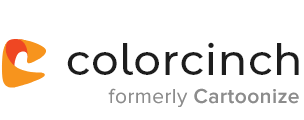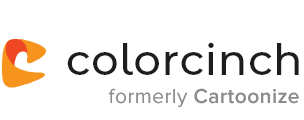![]()
Minimalism isn’t just having a moment, it’s basically the entire personality of modern design. We’ve collectively yeeted ornate details into the trash and embraced the “less is more” vibe harder than a tech bro embraces his morning cold plunge ritual.
But here’s the tea: within this stripped-back aesthetic, icons have become THE crucial design element. They’re the MVPs carrying your entire UI on their backs. Just look at how people lost their minds when Instagram changed their camera icon back in 2016 – that rainbow-to-gradient drama proved that even in minimalism, these tiny visual nuggets are where your brand personality lives or dies.
What Makes an Icon Minimalistic?
Minimalistic icons aren’t just basic – they’re intentionally basic. There’s a difference.
The Minimalistic icon checklist:
- Stripped of unnecessary details (if it doesn’t need 3 decorative dots, delete them)
- High contrast shapes that read clearly at 24px
- Limited color palette (we’re talking 1-2 colors max, not your entire brand rainbow)
- Geometric foundations that scale mathematically
Compare this to the Y2K bubble aesthetic icons or those gradient-heavy 3D icons that aged like milk. Minimalistic icons don’t chase trends – they transcend them.
Why Minimalistic Icons Work in App Design
Minimalistic icons absolutely eat in app design for practical reasons, not just aesthetic ones:
Recognition on hyperspeed. Users can process simple shapes in milliseconds. When someone’s doom-scrolling at 2 am, their brain isn’t processing complex visuals – it’s pattern-matching at warp speed.
No cognitive load. Every unnecessary detail is mental baggage your users have to carry. In testing, users completed tasks 18% faster with simplified icon sets versus detailed ones. That’s science.
Scales like your favorite creator. Try shrinking a detailed icon down to 16px on a smartwatch. Instant pixel soup. Minimalistic icons maintain their integrity from billboard size to Apple Watch.
The dirty secret of UI design is that users aren’t there to admire your artistic genius – they’re trying to get stuff done as efficiently as possible. Minimalistic icons are the ultimate servant to that goal.
Minimalistic Icons and Brand Identity: The Balancing Act
“But if everything’s minimal, won’t everything look the same?” I hear you crying into your mechanical keyboard. Valid concern, but that’s where the artistry comes in.
Airbnb’s minimalist logo feels warm and inviting. Spotify’s simple green circle with three sound waves is instantly recognizable. Discord’s gamepad/face icon communicates both gaming AND community in the simplest possible form.
These brands prove you can be minimal AND unique – it just requires more creativity than slapping your entire logo into a rounded square and calling it a day.
The Instagram icon evolution is literally the perfect case study. Their original skeuomorphic camera (RIP 2016) was replaced with a flat, minimal gradient outline. People HATED it at first, but now? The simplified version is more recognizable than the original ever was. Sometimes your users just need time to cope with change.
Designing or Choosing the Right Minimalistic Icons
If you’re diving into the minimalistic icon pool, here’s how not to drown:
- Start with function, not form. What ACTION does this icon represent? Solve that before making it pretty.
- Embrace negative space. The magic of minimalism often lives in what you DON’T include.
- Test at multiple sizes. If it doesn’t read clearly at 16px, throw the whole icon away.
- Maintain visual consistency. Your icons should look like they’re from the same family, not random adopted shapes that happened to move in together.
For the non-designers, you don’t need to reinvent the wheel. Resources like cartoonize.net offer icon customization tools that let you tweak existing minimalistic icon sets to match your vibe. Steal like an artist, modify like a designer.
Common Mistakes to Avoid with Minimalistic Icons
The icon graveyard is filled with these minimalistic disasters:
- The “too minimal to function” icon. Ah yes, the mysterious unlabeled geometric shape that could mean literally anything. Is it settings? Is it profile? Is it the nuclear launch codes? No one knows!
- Poor accessibility. Thin, light gray icons on slightly-less-light gray backgrounds are a crime against humanity and should be treated as such.
- The “I’m using 7 different icon styles” chaos approach. Nothing screams “I don’t know what I’m doing” like mixing outline icons, solid icons, duotone icons, and material design all on the same screen. Pick a lane.
- The “let’s remove ALL visual cues” disaster. Some designers get so high on minimalism that they remove the very visual cues that make icons usable. A hamburger menu without the three lines is just an empty square.
Future Trends: Where Minimalistic Icons Are Headed
Plot twist: pure minimalism is showing early signs of fatigue.
After years of flat design tyranny, dimensional elements are sneaking back into the chat. Airbnb’s 2025 redesign features skeuomorphic icons moving away from the flat to “feel more human”.
Google’s Material You and Apple’s recent UI refresh both hint at the same evolution: minimalism with just a sprinkle of depth and personality. It’s minimalism that doesn’t take itself so seriously.
The real question isn’t “is flat design dying?” but rather “what elements of dimension add genuine value to user experience?” Smart designers are finding that selective use of shadows, subtle gradients, and implied texture can improve usability while maintaining minimalism’s clarity.
My prediction? We’re entering the era of “comfort minimalism” – designs that blend the cleanliness of minimalism with just enough warmth and dimension to feel human.
Wrapping Up
Let’s wrap this up: Minimalistic icons aren’t just a trendy design choice – they’re the result of designers finally prioritizing user needs over their own artistic egos.
The best minimalistic icons are like good waiters – they do their job so efficiently you barely notice them. They guide, inform, and then get out of the way so users can focus on what matters.
Whether you’re building the next killer app or just refreshing your website, embracing thoughtful icon minimalism isn’t following a trend – it’s acknowledging a fundamental truth about human visual processing.
Just remember: even in minimalism, every pixel should earn its place. Now go forth and simplify with purpose!




